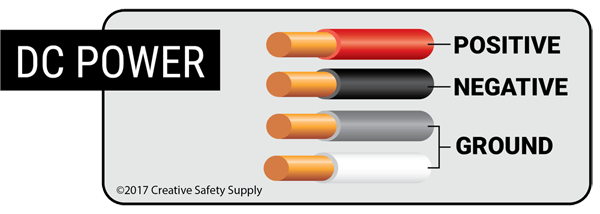

This is because the negative terminal is connected to the car's chassis or ground. Which could cause a short circuit or spark. Prevents Damage to the Electrical SystemĪs mentioned earlier, connecting the positive terminal first ensures that there is no accidental contact with the negative terminal.There are several reasons why connecting the positive terminal first is recommended when installing a car battery. Why does My Car Leak Water When the AC is On
#NEGATIVE BLACK POSITIVE RED HOW TO#
How to Jump Start a Car: Which Cable Goes on Firstĭoes Car AC Use Gas? Unveiling the Mystery
#NEGATIVE BLACK POSITIVE RED PLUS#
The positive terminal is usually marked with a plus (+) sign and is typically larger than the negative terminal, which is marked with a minus (-) sign.īy connecting the positive terminal first, you will ensure that there is no accidental contact with the negative terminal, which could cause a short circuit or even a spark that could ignite the battery gases. The general rule of thumb when installing a car battery is to connect the positive terminal first. The Short Answer: Connect the Positive Terminal First Which terminal Positive or Negative should be connected First When Installing a new Battery on the Car? Which terminal - positive or negative - should be connected first? In this article, we will discuss the answer to this question and the reasons behind it. However, when it comes to replacing or installing a new car battery, there is a common question that arises: They provide power to start the engine and supply electricity to other systems such as lights, radio, and air conditioning. However, many people are not sure which terminal to connect to first – positive or negative.Ĭar batteries are essential components of a vehicle's electrical system. The negative terminal is often called the ground terminal and is connected to the earth or zero volts.When installing a new car battery or replacing an old one, it is important to connect the terminals correctly.

The positive terminal is where the electrical current enters the battery, while the negative terminal is where the current exits.

In addition to the color coding, it’s also essential to understand the function of each terminal. The positive terminal is easily identifiable by the red stripe or marking, while the absence of any markings or a black line identifies the negative terminal. The red wire should be connected to the positive terminal, while the black wire should be connected to the negative terminal. Always refer to the markings or labels on the battery to correctly identify the positive and negative terminals, and take care to connect the wires or devices accordingly. It’s essential to correctly identify the polarity of the battery terminals before connecting any wires or devices, as reversing the polarity can cause significant damage to the battery and the device it powers. The positive terminal is typically marked with a (+) plus sign or a raised bump, while the negative terminal is marked with a (-) minus sign or a flat surface. To correctly identify a battery’s positive and negative terminals, look for markings or labeling on the battery itself. Some batteries may not have color coding, so relying on other methods for identifying the polarity of the terminals is essential, such as a plus sign or a raised bump on the positive terminal. While the colors red and black are commonly associated with a battery’s positive and negative terminals, it’s important to note that not all batteries are color-coded in the same way.


 0 kommentar(er)
0 kommentar(er)
